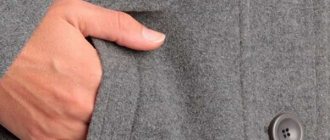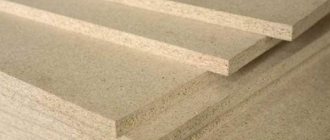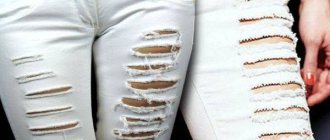This is one of the most common tools, which is available in every family for cutting all kinds of materials, but does not always perform its tasks clearly enough.
Rough operation is caused by improper sharpening of the blades or unbalanced movement of the cutting edges.
Eliminating them is quite simple for anyone with a regular set of sharpening devices. To do this, it is necessary to understand the principles of creating a cut.
The article provides advice to the home craftsman on how to sharpen scissors and adjust their blades for proper DIY work at home, with explanations along the way using pictures, diagrams and a video.
- Scissor straightening tools
To understand the principles of sharpening and setting up a tool, you should understand its design and the basics of cutting the materials being processed.
Home sharpening methods
You can sharpen scissors at home. There are several ways to do this. Each of them has certain advantages and disadvantages.
Foil
The easiest way to sharpen hairdressing scissors. Suitable for daily sharpening. Serious damage cannot be repaired this way. Step-by-step instruction:
- Prepare several large sheets of foil.
- Fold each sheet individually to form tight strips.
- Cut the foil until the required degree of metal sharpness is achieved.
Foil for food
Metal sponge
Before you start sharpening scissors with a metal sponge, you need to prepare a trash can so that the resulting metal chips do not fly around. Step-by-step instruction:
- Take a soft metal sponge.
- Start cutting it with the cutting edge, trying to use the entire blade.
The sharpness will directly depend on the number of cuts made.
Gypsy needle
This method is recommended by hairdressers for sharpening devices used to process cuticles or nails. Step-by-step instruction:
- Secure the needle between the blades. Start “cutting” it.
- At the same time, you can move the needle along the cutting edges.
- Continue the procedure until the blade is sharp enough.
It is important to put in a minimum of effort. Movements should be smooth, without applying strong pressure.
If you don’t have a gypsy needle, you can use a screwdriver, knitting needles, or a sewing pin.
Glass jar
Use unnecessary glass containers. To sharpen small scissors, you need to take a bottle with a narrow neck. Step-by-step instruction:
- You need to start cutting the can at the neck so that the can moves back and the cutting edges move towards each other.
- Repeat the movements until the blades are sharp.
After the procedure, you need to thoroughly wipe the scissors to get rid of glass chips.
Special sharpener
Sharpening stones are often used to sharpen scissors. They may have one or two sides. If there are two of them, you need to start sharpening on the side with large abrasive particles. Step-by-step instruction:
- Place the stone in front of you on a piece of rag.
- Moisten it with a little water.
- The blade angle must be set to the factory setting so as not to damage the scissors.
- Start moving the blade in only one direction (preferably away from you). The entire cutting edge must be engaged.
After the procedure, you need to repeat it on a fine abrasive material.
Sandpaper
Using sandpaper, you can quickly sharpen scissors, but the quality of sharpening will be worse than after processing with a whetstone. It is advisable to choose 150–200 sandpaper. There are three ways to use sandpaper:
- Cut coarse sandpaper. It is enough to make 25 cuts to restore the sharpness.
- Run the paper along the blade until it becomes sharp.
- Place the sandpaper in front of you. Drive the cutting edges along the abrasive applying force.
After completing the work, you need to wipe the tool to remove metal dust.
Sandpaper for sharpening
File
This method takes longer than others. To carry out the work you need a fine-grained file. It is secured in a vice. The cutting parts must be moved along the working surface of the tool. Perform movements in one direction only. Maintain the factory angle so as not to spoil it. The approximate time of the procedure is 1 hour.
Professional devices
Professional sharpening devices include diamond stones, needle files, and abrasive discs. They are used by craftsmen who sharpen for a fee. It is more difficult to use such devices, which is why it is advisable to entrust the work to a knowledgeable person.
Stages and methods of sharpening scissors
There are two working methods:
- fast and ineffective;
- longer and more effective.
The first is relevant if a sharp cutting tool is needed urgently. To sharpen it, use one of two products:
- sandpaper (fine grain);
- igloo
In the first case, you need to sand the sandpaper with each blade several times until small cuts appear. This will make the edges a little sharper. The method is convenient, it will take a couple of minutes to work, but metal scissors will not work for long.
Experts do not recommend sharpening the devices in question to the point of a razor. Sometimes it turns out that such a device is not capable of cutting a simple surface like paper.
Using a needle is more effective, but also has its drawbacks. A thicker product is taken and placed between the blades as close as possible to the fastener. Next, the scissors are compressed and unclenched, gradually pushing the needle towards the edges of the parts of the instrument. Having performed the operation twice, the master will sharpen the edges well and return the scissors to functionality.
Longer sharpening of scissors involves the use of a vice and a hard abrasive, which is usually a file. The sequence of actions is as follows:
- the product is disassembled;
- one of the halves of the scissors is fixed in a vice so that the sharp edge is located “away from you”, and the side to be sharpened is on top;
- by moving the file away from you, dents and chips are removed from the cutting edge until the edge of the blade becomes perfectly smooth;
- work with a file slowly, strictly in one direction;
- Similar manipulations are carried out with the second half of the scissors.
Read also: Specific gravity of stainless steel 12x18n10t
It is not recommended to immediately assemble the product. First, the blades are lubricated with an anti-corrosion fluid, which extends their life without the need for re-sharpening. Then the sharpened blades are combined, and the user gets to work.
If the blades are not to blame
Tools do not always cut well because of dull blades. Before you take your product to be sharpened, you should make sure whether it is needed in everyday life. You need to inspect the fastening; if it is weak, then the scissors do not cut, but simply “chew.” In this case, you can easily deal with the problem - just tighten the fastener. It is easier to solve the problem of a weak connection if a bolt is used. The scissors are opened, the fastening is tightened using a screwdriver or other objects.
If the manufacturer uses a rivet as a fastening, then you will have to suffer longer. To tighten the fastening, the plug is “flattened” with a hammer. Then the cutting product is placed on a flat and hard surface, and you can start working. The object must be tightened only when it is open, otherwise it may not fit together after closing. If after these manipulations there is a gap between the ends, you can file the stop. It is located between the rings. To solve the problem, sometimes it is enough to lubricate the product with a spindle - a special lubricant designed for sewing machines. There is no need to pour too much product, one drop is enough.
What is prohibited for scissors
Office or garden tools may not be used for very long, but manicure accessories are usually used every day. To extend the life of your favorite tools, you need to follow these tips:
- In some sources you can find advice that scissors can be boiled to disinfect. This is wrong because the thing will quickly rust. Now in pharmacies you can find inexpensive antiseptic preparations that can be used to wipe the blades to disinfect them.
- Once every six months, the layout mechanism should be treated with oil. To do this, you need to drop a few drops of oil into the area where the axis opens, for example, you can use olive, castor or vegetable oil. Oil lubricates the backlash - this prevents corrosion.
- It is not recommended to disassemble the mechanism of the product, because not all scissors can be reassembled later.
- Items should be used for their intended purpose: hair salons - for cutting hair, manicure - for trimming cuticles, and soda - for trimming plants. Incorrect use will quickly cause the blades to become dull.
- The metal cannot be ground down over the entire thickness of the blades; a special angle is made to make it convenient to cut the material. If you grind off the entire fabric, the object will stop cutting. They will stop functioning if the stitching angle is chosen incorrectly.
- Before sharpening, you need to check the condition of the edge. If there are notches or burrs, then the product will not cut precisely because of them. To make the scissors sharp again, you need to remove the interfering edge.
- Cleaning the blade surface is an important part of the job before sharpening. Often when cutting tape at home, it sticks to the surface of the sheath, causing the blades to become dirty. The remaining pieces of adhesive tape cling to the material and cover the cutting surface. Foreign objects are removed using alcohol or solvent.
It is better to take professional products to a master, because not everything can be sharpened at home. For example, thinning scissors cannot be sharpened to the required sharpness at home. Buying a new tool instead of an old one is an extreme measure; you should resort to it if it cannot be sharpened. If you turn to an experienced craftsman, he will help you align the blades and sharpen the tool better than at the factory.
Sharpening a tool is possible at home, but it is easier to prevent it from becoming dull than to deal with it later on your own. In order for the sharpness of the product to be preserved for a long time, the item must be used strictly for its intended purpose. If the tweezers are intended for manicure, then they are strictly prohibited from cutting fabric or cardboard. Those who are interested in sewing should purchase several models of tools for a specific task. When making clothes, you often have to cut threads from metal, zippers, and if you do this with cutting tongs, they will quickly become dull.
Recommendations for proper sharpening
Before you start sharpening, you must check the tool for defects. If the scissors do not cut the fabric, but only crush it, then the cause may be a loose fastening: a rivet or a screw.
A poorly tightened screw must be secured so that the blades fit snugly against each other. At the same time, you should not overtighten the mount, as your hand will quickly get tired during operation.
In addition, the screw must be turned no more than 0.5 mm. Otherwise, the mechanism may become stuck and cannot be repaired in the future.
If a rivet in the tool has loosened, then it is slightly flattened with a hammer. First, the scissors are opened as wide as possible and secured to the plane.
Read also: Why does the washing machine vibrate a lot during the spin cycle?
The edges do not close tightly. To correct the situation, you need to lightly trim the limiter, which is located on the inside of one of the rings, with a file.
Sharpening using improvised means and tools
There are several ways, based on folk experience, on how to sharpen scissors at home. You do not need a special tool, but only simple available tools. Of course, there are sharpening devices and machines, but they are mainly used when it is necessary to restore the sharpness of blades on professional scissors.
Smooth metal rod
This is the most affordable way to sharpen scissors at home. You will need any small diameter steel rod with a smooth surface. This could be a gypsy needle, an awl, a screwdriver, a pin, or even a simple paper clip.
A little worse, but still possible, is to use a round AA or AAA AA battery.
Spread the scissors so that the rod fits as close to the pinch bolt as possible. After this, lightly pressing the handles, begin to bring the blades together, and move the tool you are using away from you towards the cutting ends. Perform these steps 10-15 times and check how the paper is now cut. If the result is still unsatisfactory, repeat the operation again.
Porcelain cup
Most tea cups have a smooth abrasive surface on the outside of the bottom. It can be used instead of a special sharpening stone.
Open the scissors as far as possible. Apply the bevel of the blade at the top to the edge of the cup and, pressing lightly on it, move it along the abrasive towards you. The movement when sharpening should occur only in one direction, otherwise you may not sharpen, but completely and completely ruin the tool.
Aluminum foil and sandpaper
Probably every housewife has foil in her kitchen for baking food. Take the roll and tear off a piece 20-30 cm long from it. Fold it lengthwise 6-8 times to get a dense multi-layer strip. After this, start cutting the foil lengthwise, using the entire length of the blades. After 10 cuts, check the sharpness and, if necessary, repeat the steps.
Instead of foil, you can use fine-grained sandpaper. It should be folded in half so that the abrasive remains on the outside of both sides. In this case, the number of cuts for the first attempt can be halved. After finishing work, be sure to wipe the blades with a damp cloth to remove any abrasive residue.
Metal sponge for washing dishes
Also present in most apartments and can be used as a tool for sharpening scissors. The principle of using a sponge is the same as in the case of using foil and sandpaper. However, the size of the metal sponge that you can buy in the store is usually smaller than the length of the blades. Therefore, it should be stretched so that the entire cutting part of the scissors can be used.
Sharpening with a special tool
In hardware stores you can find a wide variety of accessories and tools for sharpening scissors. If you decide to buy one of these, remember that the operating principles of knife blades and scissor blades are very different.
Sharpening stones
An abrasive stone or whetstone is considered the simplest tool for straightening any cutting blades. When sharpening scissors, it should only come into contact with the top edge, sharpened at a certain angle. When working, you must be extremely careful and try to maintain as accurately as possible the sharpening angle of the scissors specified by the tool manufacturer.
The movement of scissors on a stone or a block on a blade should be done only in one direction with gentle pressure. Traveling back and forth is not permitted. If you unscrew the coupling bolt and disassemble the scissors, it will be more convenient to work.
Files
A flat or triangular file with a fine cut is a more advanced sharpening tool. The principles of editing here are the same as for stone. Tool movements occur along the cutting edge and only in one direction. When attaching scissors in a vice, working is easier and more convenient.
The main disadvantage of this method is the likelihood of uneven sharpening. Therefore, try to ensure that you apply the same amount of pressure with your hands on the tool at all times and count the number of movements performed for each blade.
Sharpening machine
Rotating abrasive wheels are installed on special machines for sharpening cutting tools. Processing occurs across the cutting edge at a certain angle and, if you do not have the skills for such work, then it is better to refuse mechanical sharpening so as not to damage the scissors and avoid injury.
How to clean plastic panels in the bathroom?
Functionality check
The traditional method of monitoring the sharpness of an instrument on paper is inappropriate in this case. After all, even a blunt object can cut a sheet. It is better to check the blades on the fabric. If it cuts easily, without jamming, the scissors are considered to be properly sharpened; they can be used on metal surfaces.
Knowing how to sharpen scissors will help a novice specialist choose the most suitable one for specific conditions. It is advisable to know the material of manufacture, the manufacturer’s recommendations, and also timely monitor the wear of the cutting edges. After sharpening, do not forget about treating with liquid. Then the product will work for more than one month and will not give you a reason to return to sharpening them again.
Metal scissors periodically become dull. But they are not difficult to resharpen.
Take the scissors apart. The surface of the blades that meet must first be sharpened using an emery cloth mounted on a flat, flat base. Next, take a double-notch file and use it to remove the nicks on the outer sides of the blades. There is another trick here - they work with a file, moving it in only one direction. Remove nicks with short, confident movements towards you. Resharpen both blades this way and your scissors will be as good as new.
1 – Serrations on the cutting edges 2 – The plane of the blades that closes
Sharpening parts that fit together using sandpaper
The most in-demand tool in the house is scissors. Various types of them are used in everyday life: tailor's, gardening, manicure, hairdressing and others. With frequent use, the blades become dull and a problem arises: how to sharpen the scissors yourself.
• How to sharpen scissors at home
Every owner or housewife has at least once encountered such a situation when you take scissors, but they don’t cut. There is nothing supernatural about this: like all knives in this world, scissors have a bad habit of becoming dull. In fact, there is no problem here, at least if you know how to sharpen them easily and quickly. Here are eight ways.
Paper clip
We arm ourselves with a regular paper clip and clamp its tip with scissors. Squeezing it a little, we draw the paper clip to the intersection of the knives. That's all the technology is. As simple as possible and yet quite effective.
Battery
You can use a AA battery to sharpen knives. Another very effective way. True, there is one “but” here, which is the battery requirement. It must be enclosed in a metal casing. The actions are exactly the same as with a paper clip.
Sandpaper
To sharpen scissors using sandpaper, it is best to take the one that has the smallest grit. The ideal option would be “zero”. The sharpening technique is still simple - take our scissors and start cutting the paper into shreds. After such sharpening, it is recommended to cut a napkin to smooth the knives.
Glass
Any glass is an incredibly hard material that is ideal for sharpening knives and scissors. It is best to take a bottle and “cut” its neck. Just be careful: the glass may crumble.
Foil
We take ordinary food foil, roll it up into several layers and start cutting. The method will largely repeat the one that uses sandpaper. Approximately 40-50 cuts of foil should be enough to properly sharpen the blades.
Screwdriver
The method is similar to the glass bottle method. First, we rest the screwdriver against a hard surface, after which we begin to “cut” its shaft. The operation should be repeated 30-40 times, in some cases – 50 times.
Needle file
For this method you will need not only a needle file, but also a vice. When open, the scissors must be held with the knives facing up. After this, we begin to carefully walk the file along the edge from the middle to the tip. Each side needs to be sharpened in this way separately.
Metal sponge
Finally, here’s another method. Just take and cut the sponge. After such sharpening, it is recommended to thoroughly clean the knives to rid them of unnecessary fragments.
Like? Click:
What can be done
- Sandpaper works well for this. It is better to choose one that has a larger grain size. Having folded the sheet in half, you can begin to cut it, it is desirable that the blades touch the entire length of the abrasive. With each movement the scissors will become sharper. After finishing sharpening, you need to wipe this manicure tool with a damp cloth to remove microparticles remaining on it.
- Ordinary aluminum foil, which is sold everywhere, can also be used as an abrasive material. Having folded it in several layers, you can start cutting it into strips. If strong sharpening of the blades is required, then you need to make as many cuts as possible. After finishing work, you need to wipe the blades.
- A whetstone is perfect for this job. Its coarse-grained part is better suited for starting turning when the blades are still very dull. After this, it is better to continue working with a fine-grained surface to finish sanding the scissors. Before you start sanding, you need to disassemble the manicure tool to make it more convenient to work. To do this, simply unscrew the central screw and divide it into two halves. After this, you need to place one of the blades with the inner flat side (which is usually in contact with the other half of the scissors) on the whetstone. Next you need to choose the right angle at which to sharpen the blade. A dozen repeated movements will be enough to complete the job. To ensure that the tool is sharp enough, you can mark the sharp parts of the blades with a felt-tip pen before starting sharpening. If after the procedure the marks are erased, it means that the scissors are sufficiently sharpened. The test can also be carried out on a piece of polyethylene; if they do not crumple it and cut it easily, then the cutting edges are sharp enough.
- You can use an old unnecessary glass jar for sharpening. To do this, you need to hold the container with one hand and open and close the blades of the scissors with the other, pressing them tightly against the walls of the jar. Glass will make the blades sharper. After finishing sharpening, you must remember to wipe them with a damp cloth to remove burrs.
- Use a pin or needle according to the same principle as described above. By moving the metal base of the pin between the interlocking blades, you can add sharpness with just a few strokes. In this case, you need to watch the blades so as not to get hurt.
- Having a diamond wheel will make the work much easier. Moreover, the effect of its use lasts for a long time. When working, you should take into account the shape of the tool, since nail scissors often have semicircular blades, which requires attention to their processing. Without having the skills to work with objects on a machine, it is better not to start it, as you can damage the scissors by removing too much metal. For rounded blades, an edge of a sharpening stone with a radius close to the radius of curvature of the blade is ideal.
Many people do not hesitate to throw away scissors that have just become dull, but otherwise work fine. But they can be sharpened quite simply without resorting to the services of special workshops. Thus, having learned how to independently return the scissors to working condition, you can use them for a long time without buying new ones. At the same time, following the advice outlined in the article, you can return your favorite nail scissors to working condition, which you are used to and which you do not want to change.
Sharpening with a whetstone or whetstone
The whetstone can be placed on the table or sharpened in weight. The block or stone is pre-moistened with water.
The plane of the scissors blade, which is sharpened at an angle, should be in contact with the sharpening tool. Regardless of whether you make movements with the blade or the bar on it, they should be directed towards yourself or away from you. You cannot sharpen the blade by changing direction. If you are sure that you will be able to assemble the scissors, sharpen each blade separately, disassembled.
Lifehacks on how to keep scissors sharp
It all depends on how you use the product. If you follow standard rules, sharpening will not be needed for several years.
- Office scissors are not suitable for sewing; with such a tool you often have to cut metal elements; it is better to have specialized products designed specifically for tailors.
- After use, scissors need to be disinfected, especially for manicure products. It is strictly not recommended to use boiling, as this will lead to the formation of rust and rapid dulling. The best way is to buy a good antiseptic.
- Also, to improve performance, once every 3 months you need to lubricate with regular or special sewing oil.
How to extend the life of scissors
Sharpening and repairing scissors may not be necessary for a long time if you follow simple rules for operating and storing the tool:
- scissors for manicure and hair cutting require regular treatment with antiseptic substances. Scissors should not be boiled. This will damage the sharp edge of the metal. The aquatic environment promotes the development of corrosion;
- the central screw mechanism must be treated with machine oil once every six months;
- Use scissors as intended. After work, wipe the blades of the scissors with a cloth;
- store scissors in a case. If they become wet during operation, wipe the instrument with a moisture-absorbing cloth.
Typical defects
Any scissors can work poorly for two reasons:
- the blades came apart;
- the cutting edge of the supply has become dull.
How does a gap occur?
If the scissors are made of soft alloy steel, then when large loads are placed on the blade, the latter may become deformed and move away from the cutting plane. In this case, they will further bend the material rather than cut it.
Such a defect is easy to detect if you look at the gap between the shifted blades.
How to adjust blade stroke
The reason for the divergence of the surface of the edges may be:
- loosening the screw clamp of the rotation axis;
- metal deformation due to the application of increased loads;
- a combined manifestation of both faults.
In the first case, just tighten the screw: the scissors will cut normally. If there is a bend in the plane of a thinner blade (they are most often created of different thicknesses), then it should be given its original shape.
It is unlikely that it will be possible to bring hairdressing scissors to an ideal level in this way. However, household models designed for cutting paper or fabric can be adjusted by making a convex bend on the surface so that when processing the material, both blades touch, being in a common cutting plane.
Cutting edge irregularities
The metal of the scissor blade, like a knife, wears out over time.
It is periodically required to be sharpened and the surface of the cutting wedge to be formed. Depending on the purpose of the tool, the edge is formed:
- regular sharpening;
- or additional polishing of its surface.
Hairdressing scissors do not polish their edges when sharpening. Thin grooves from fine-grained abrasive materials located on the inlets hold hair well when cutting.
Features of work
The hardness of the material from which the tool is made affects the sharpening angle. The higher the indicator, the sharper the cutting blades are sharpened. Metal shears are made of durable steel, the hardness of which is 58-60 units on the Rockwell scale (HRC). The figure is quite high; It is required to ensure a sharpening angle of at least 75 degrees. This is their difference from, for example, kitchen (50-55 HRC, 15-20 degrees) or household (53-55 HRC, 45-60 degrees) knives.
Metal shears are made of high-strength steel
Sharpening the scissors itself does not take more than half an hour. The tool manufacturer recommends contacting specialists, but a self-respecting craftsman will restore the blades to functionality on their own.
Grinding the knife after sharpening
After processing the blade, it is recommended to grind it using a block or other abrasive. Then, to obtain an optimal result, it is recommended to continue polishing with a fine-grained material. A leather belt works well for this purpose.
The belt secured on one side is lubricated with goyi paste and pulled by hand through the loop at the other end. Polishing and finishing are done with the butt forward, alternately on each side, gradually reducing the pressure on the belt. Grinding is considered complete when the blade surface is brought to a mirror shine. This method can be used to edit both a shoemaker's knife and a folding knife.
Handy tools for sharpening
If scissors need to be sharpened quickly, but there are no available tools at home, then tools that can be found in any home will do. With their help, you can cope with the task in a few minutes. But the results of the work will be short-lived. If the tool is expensive, then it is better not to use dubious sharpening methods, so as not to damage the tweezers. It is better not to sharpen professional products using home methods, because this can damage the instrument. Sharpening methods:
- Sandpaper. This method is suitable for those instruments that have lost a little of their sharpness. If the scissors are too dull, then this method will not be able to correct the situation. How to sharpen: Fold a sheet of sandpaper so that the fine-grained side is on top. It needs to be cut into long strips so that the entire plane of the cutting object is used. Approximately 25 incisions are made. At the end of the work, the blade is wiped to get rid of sandpaper chips. You need to check the sharpness of the product, the result will surprise you! Sandpaper helps with zigzag scissors. Their blade has a characteristic sharpening, so the product can be sharpened with a whetstone.
- Foil. If you need a sharp tool, you can use a simple method like sharpening nail scissors at home by using foil. If the scissors need to be as sharp as possible, then many thin strips of foil are cut. And if you need to sharpen them a little, then it is better to make 5 or 6 movements. To work, you will need a sheet of foil 25 cm wide. It needs to be folded several times to get the thick side. The material is cut into strips; you need to ensure that the entire surface of the cutting tool is used, that is, from the base to the tips.
If you need very sharp tools, then you can use one trick: a sheet of foil needs to be folded in such a way as to form a thick strip. Then the effect of sharpening will be maximum.
Metal sponge and needle
Every housewife has a metal sponge in everyday life; it will become an excellent assistant when you need to quickly sharpen scissors or nail clippers. When sharpening, small particles scatter from the sponge in different directions, there will be a lot of them and they are small, so it is difficult to collect them after work. It is better to sharpen products over a trash can so as not to sweep them later. How to sharpen: you need to prepare a metal sponge in advance; it is better to choose the one that is softer. The sponge is cut across the entire surface, and the entire blade must be used. The more cuts you make, the sharper the tool becomes.
In addition to a metal sponge, you can use a gypsy needle to sharpen nail clippers or scissors. It is suitable for processing small instruments. How to proceed:
- You need to make a cut along the needle, closing the blades, drawing out the cutting edges along the object.
- When working, minimal effort is applied, all movements should be light and gliding.
- The cuts are made until the product becomes sharp.
Instead of a needle, you can use a knitting needle, screwdriver or pin. The main thing is not to lose the essence of the method - the work should be done on the metal using the entire cutting surface of the scissors.
Application of glass jar
The peculiarity of the method is to use an unnecessary can, because it will leave scratches and chips. If you need to sharpen a small tool, use a bottle with a narrow neck. How to sharpen:
- Movements are made as if the can is being “cut,” the blade slides along it, and the bottle moves back.
- Movements are performed until the result is satisfactory.
- After use, the blades are wiped down so that there is no glass dust on them.
All traditional methods give short-term results; in order for the product to remain sharp for a long time, you need to seek help from a professional craftsman.
List of sources
- metalloy.ru
- uborka.co
- extrememale.ru
- www.stroyudom.su
- www.fresher.ru
- HouseDiz.ru
- howtogetrid.ru
- blog.comfy.ua
- Author: Sergey
Share with your friends!











